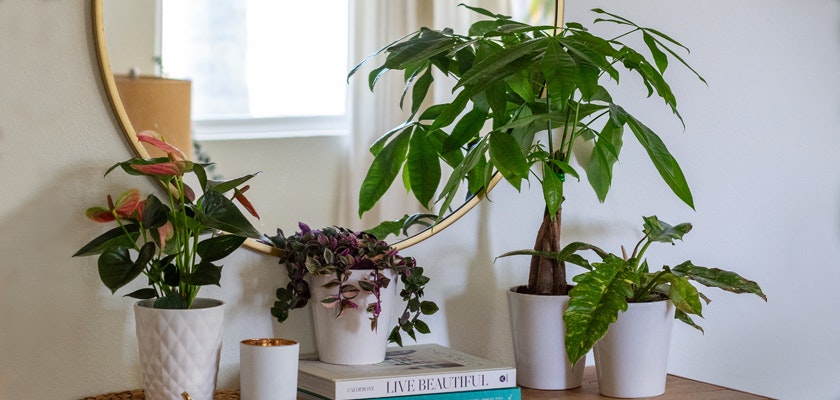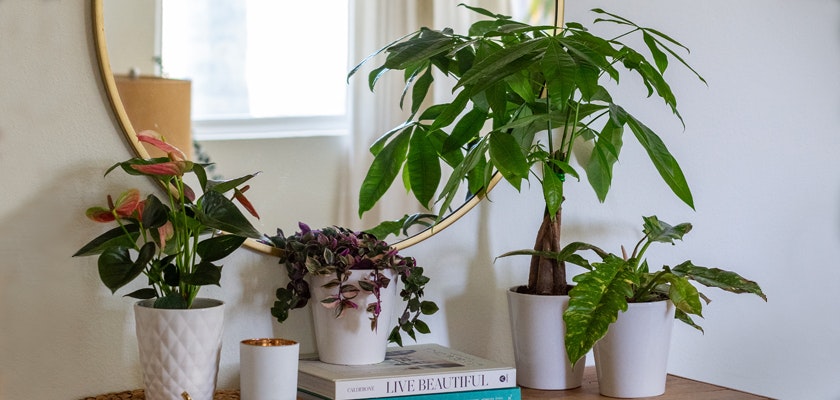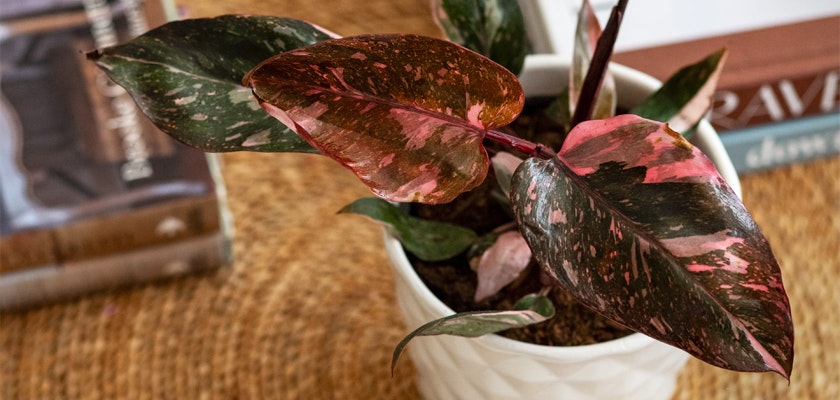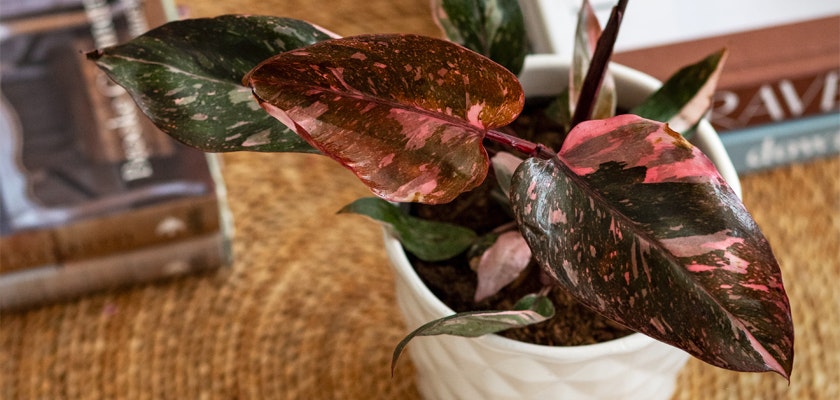Best and Worst Plants for People with Allergies
For many, indoor and outdoor plants offer a touch of nature that can brighten up any space. However, for allergy sufferers, certain plants can be a source of discomfort and health issues.
Discover the best and worst plants for people with allergies
Knowing which plants to choose and which to avoid can make a significant difference in your overall well-being. This blog post provides an extensive guide on the best and worst plants for people with allergies, including reasons behind plant allergies, and practical tips for managing allergy symptoms.
Discover the best and worst plants for people with allergies
Knowing which plants to choose and which to avoid can make a significant difference in your overall well-being. This blog post provides an extensive guide on the best and worst plants for people with allergies, including reasons behind plant allergies, and practical tips for managing allergy symptoms.
Understanding which plants are likely to trigger allergic reactions is crucial for creating a comfortable environment. Whether you have indoor plants or a lush garden, making informed choices can help you enjoy greenery without the sneezing, itching, and other unpleasant symptoms.
We'll explore ten flowers that are best suited for allergy sufferers and ten that are best avoided. Additionally, we'll delve into various factors affecting plant allergies, such as pollen production, fragrance, and more. By the end of this guide, you'll have a comprehensive understanding of how to make your living space allergy-friendly.
Our goal is to provide you with valuable information to help you make informed decisions about the plants you bring into your home or garden. With the right choices, you can enjoy the beauty of nature without compromising your health.
Finally, we'll introduce BloomsyBox, a provider of allergy-friendly plant options, ensuring you can find the perfect plants for your specific needs. Let's dive into the world of allergy-friendly gardening and discover how to create a space that’s both beautiful and comfortable.
The Reasons Behind Plant Allergies
Plant allergies are typically caused by the proteins found in pollen grains. When these proteins come into contact with the mucous membranes in the nose, eyes, or lungs, they can trigger an immune response in susceptible individuals. This immune response leads to the release of histamines, causing symptoms such as sneezing, itching, watery eyes, and congestion.
Some plants produce more pollen than others, making them more likely to cause allergic reactions. Wind-pollinated plants, in particular, release large amounts of pollen into the air, increasing the likelihood of inhaling these particles. Conversely, insect-pollinated plants tend to produce heavier, stickier pollen that is less likely to become airborne.
Fragrance can also play a role in plant allergies. Highly fragrant plants can irritate the respiratory system, even if the pollen itself is not particularly allergenic. Understanding these factors can help you choose plants that are less likely to trigger your allergies.
Best Plants for People with Allergies
1. Roses
Roses are a popular choice for gardens and indoor arrangements due to their beauty and variety. Fortunately, they are also a good option for allergy sufferers. Most rose species produce minimal pollen, and the pollen they do produce is typically too heavy to become airborne, reducing the risk of inhalation.
Choosing hybrid roses with double petals can further minimize the potential for pollen exposure. These varieties often produce even less pollen and are less likely to cause allergic reactions.
2. Orchids
In addition to being low-pollen, orchids are relatively easy to care for. They thrive in bright, indirect light and require only moderate watering, making them a low-maintenance choice for allergy-conscious gardeners.
3. Begonias
Begonias are known for their vibrant flowers and attractive foliage. They are also a great choice for those with allergies, as they produce minimal pollen. Begonias are suitable for both indoor and outdoor planting, adding a splash of color without the risk of triggering allergy symptoms.
These plants prefer shaded or partially shaded areas and thrive in well-draining soil. Regular watering and occasional fertilization will keep begonias healthy and blooming.
4. Tulips
Tulips are a spring favorite, known for their bright and cheerful blooms. They are also relatively allergy-friendly, producing low levels of pollen that are not easily airborne. Tulips are best planted in the fall for spring blooming, providing a beautiful and low-allergy addition to your garden.
Plant tulip bulbs in well-draining soil and ensure they receive plenty of sunlight. With proper care, tulips can provide a stunning display year after year without causing allergy issues.
5. Daffodils
Daffodils are another springtime favorite that is gentle on allergy sufferers. These cheerful yellow flowers produce minimal pollen, making them a safe choice for those sensitive to allergens. Daffodils are also deer-resistant and easy to grow, making them a practical option for many gardens.
Plant daffodil bulbs in the fall in well-draining soil, and provide full sun or partial shade. With minimal maintenance, daffodils will brighten your garden each spring without causing allergic reactions.
6. Hydrangeas
Hydrangeas are known for their large, showy blooms and are generally considered low-allergy plants. Their pollen is sticky and not easily airborne, reducing the risk of inhalation. Hydrangeas come in a variety of colors, including blue, pink, and white, offering plenty of options for allergy-friendly gardening.
These plants prefer partial shade and well-draining soil. Regular watering and occasional pruning will keep hydrangeas healthy and blooming throughout the growing season.
7. Petunias
Petunias are a popular choice for gardens and containers, known for their vibrant colors and long blooming period. They are also a good option for allergy sufferers, as they produce minimal pollen. Petunias thrive in sunny locations and require regular watering and deadheading to encourage continuous blooms.
With their wide range of colors and easy care requirements, petunias are a versatile and allergy-friendly addition to any garden or patio.
8. Periwinkle
Periwinkle, also known as vinca, is a low-growing ground cover with attractive blue or purple flowers. It produces minimal pollen, making it a suitable choice for those with allergies. Periwinkle is also hardy and easy to grow, thriving in a variety of conditions.
Plant periwinkle in well-draining soil and provide partial shade for optimal growth. This low-maintenance plant can add color and beauty to your garden without causing allergy issues.
9. Snapdragons
Snapdragons are known for their tall spikes of colorful blooms and are relatively low in pollen. This makes them a good choice for allergy sufferers looking to add height and texture to their garden. Snapdragons prefer full sun and well-draining soil, and with regular watering, they can provide a long-lasting display of flowers.
These plants are also deer-resistant and attract beneficial insects like bees and butterflies, making them a valuable addition to any garden.
10. Cacti and Succulents
Cacti and succulents are ideal for allergy sufferers due to their minimal pollen production. These hardy plants are well-suited for indoor environments and require very little maintenance. With a wide variety of shapes, sizes, and colors available, cacti and succulents can add a unique and allergy-friendly touch to your home.
Place these plants in bright, indirect light and water sparingly. Their low-maintenance nature makes them perfect for busy individuals or those new to gardening.
Understanding which plants are likely to trigger allergic reactions is crucial for creating a comfortable environment. Whether you have indoor plants or a lush garden, making informed choices can help you enjoy greenery without the sneezing, itching, and other unpleasant symptoms.
We'll explore ten flowers that are best suited for allergy sufferers and ten that are best avoided. Additionally, we'll delve into various factors affecting plant allergies, such as pollen production, fragrance, and more. By the end of this guide, you'll have a comprehensive understanding of how to make your living space allergy-friendly.
Our goal is to provide you with valuable information to help you make informed decisions about the plants you bring into your home or garden. With the right choices, you can enjoy the beauty of nature without compromising your health.
Finally, we'll introduce BloomsyBox, a provider of allergy-friendly plant options, ensuring you can find the perfect plants for your specific needs. Let's dive into the world of allergy-friendly gardening and discover how to create a space that’s both beautiful and comfortable.
The Reasons Behind Plant Allergies
Plant allergies are typically caused by the proteins found in pollen grains. When these proteins come into contact with the mucous membranes in the nose, eyes, or lungs, they can trigger an immune response in susceptible individuals. This immune response leads to the release of histamines, causing symptoms such as sneezing, itching, watery eyes, and congestion.
Some plants produce more pollen than others, making them more likely to cause allergic reactions. Wind-pollinated plants, in particular, release large amounts of pollen into the air, increasing the likelihood of inhaling these particles. Conversely, insect-pollinated plants tend to produce heavier, stickier pollen that is less likely to become airborne.
Fragrance can also play a role in plant allergies. Highly fragrant plants can irritate the respiratory system, even if the pollen itself is not particularly allergenic. Understanding these factors can help you choose plants that are less likely to trigger your allergies.
Best Plants for People with Allergies
1. Roses
Roses are a popular choice for gardens and indoor arrangements due to their beauty and variety. Fortunately, they are also a good option for allergy sufferers. Most rose species produce minimal pollen, and the pollen they do produce is typically too heavy to become airborne, reducing the risk of inhalation.
Choosing hybrid roses with double petals can further minimize the potential for pollen exposure. These varieties often produce even less pollen and are less likely to cause allergic reactions.
2. Orchids
In addition to being low-pollen, orchids are relatively easy to care for. They thrive in bright, indirect light and require only moderate watering, making them a low-maintenance choice for allergy-conscious gardeners.
3. Begonias
Begonias are known for their vibrant flowers and attractive foliage. They are also a great choice for those with allergies, as they produce minimal pollen. Begonias are suitable for both indoor and outdoor planting, adding a splash of color without the risk of triggering allergy symptoms.
These plants prefer shaded or partially shaded areas and thrive in well-draining soil. Regular watering and occasional fertilization will keep begonias healthy and blooming.
4. Tulips
Tulips are a spring favorite, known for their bright and cheerful blooms. They are also relatively allergy-friendly, producing low levels of pollen that are not easily airborne. Tulips are best planted in the fall for spring blooming, providing a beautiful and low-allergy addition to your garden.
Plant tulip bulbs in well-draining soil and ensure they receive plenty of sunlight. With proper care, tulips can provide a stunning display year after year without causing allergy issues.
5. Daffodils
Daffodils are another springtime favorite that is gentle on allergy sufferers. These cheerful yellow flowers produce minimal pollen, making them a safe choice for those sensitive to allergens. Daffodils are also deer-resistant and easy to grow, making them a practical option for many gardens.
Plant daffodil bulbs in the fall in well-draining soil, and provide full sun or partial shade. With minimal maintenance, daffodils will brighten your garden each spring without causing allergic reactions.
6. Hydrangeas
Hydrangeas are known for their large, showy blooms and are generally considered low-allergy plants. Their pollen is sticky and not easily airborne, reducing the risk of inhalation. Hydrangeas come in a variety of colors, including blue, pink, and white, offering plenty of options for allergy-friendly gardening.
These plants prefer partial shade and well-draining soil. Regular watering and occasional pruning will keep hydrangeas healthy and blooming throughout the growing season.
7. Petunias
Petunias are a popular choice for gardens and containers, known for their vibrant colors and long blooming period. They are also a good option for allergy sufferers, as they produce minimal pollen. Petunias thrive in sunny locations and require regular watering and deadheading to encourage continuous blooms.
With their wide range of colors and easy care requirements, petunias are a versatile and allergy-friendly addition to any garden or patio.
8. Periwinkle
Periwinkle, also known as vinca, is a low-growing ground cover with attractive blue or purple flowers. It produces minimal pollen, making it a suitable choice for those with allergies. Periwinkle is also hardy and easy to grow, thriving in a variety of conditions.
Plant periwinkle in well-draining soil and provide partial shade for optimal growth. This low-maintenance plant can add color and beauty to your garden without causing allergy issues.
9. Snapdragons
Snapdragons are known for their tall spikes of colorful blooms and are relatively low in pollen. This makes them a good choice for allergy sufferers looking to add height and texture to their garden. Snapdragons prefer full sun and well-draining soil, and with regular watering, they can provide a long-lasting display of flowers.
These plants are also deer-resistant and attract beneficial insects like bees and butterflies, making them a valuable addition to any garden.
10. Cacti and Succulents
Cacti and succulents are ideal for allergy sufferers due to their minimal pollen production. These hardy plants are well-suited for indoor environments and require very little maintenance. With a wide variety of shapes, sizes, and colors available, cacti and succulents can add a unique and allergy-friendly touch to your home.
Place these plants in bright, indirect light and water sparingly. Their low-maintenance nature makes them perfect for busy individuals or those new to gardening.
Worst Plants for People with Allergies
1. Ragweed
Ragweed is notorious for its highly allergenic pollen, which can travel long distances and cause severe allergic reactions. Even small amounts of ragweed pollen can trigger symptoms in sensitive individuals. Avoid planting ragweed or allowing it to grow in your garden.
Removing ragweed from your property can help reduce the overall pollen count and minimize allergy symptoms during the peak pollen season.
2. Bermuda Grass
Bermuda grass is a common lawn grass that produces a significant amount of pollen. Its fine, wind-dispersed pollen can easily become airborne and cause allergic reactions. For those with grass allergies, it's best to avoid Bermuda grass and choose a low-pollen alternative for your lawn.
Regular mowing and watering can help reduce pollen production, but for those with severe allergies, it may be necessary to replace Bermuda grass with a less allergenic variety.
3. Oak Trees
Oak trees are known for their high pollen production during the spring. The pollen is wind-dispersed and can travel long distances, making it a common allergen. If you have oak trees in your yard, consider planting low-pollen shrubs or trees nearby to help block some of the pollen.
Pruning oak trees regularly can also help reduce pollen production and minimize allergy symptoms during the peak pollen season.
4. Juniper
Juniper plants, including cedar and cypress, produce large amounts of pollen that can cause allergic reactions. The pollen is particularly prevalent in the late winter and early spring. Avoid planting juniper in your garden if you are prone to allergies.
Replacing juniper with low-pollen alternatives can help create a more allergy-friendly landscape while maintaining an attractive garden design.
5. Birch Trees
Birch trees are another common allergen, producing large amounts of pollen in the spring. The pollen from birch trees is lightweight and easily carried by the wind, often triggering allergic reactions in sensitive individuals. For those with pollen allergies, it's best to avoid planting birch trees in your garden.
Consider replacing birch trees with less allergenic tree species to reduce the overall pollen count in your area and create a more comfortable environment for allergy sufferers.
6. Chrysanthemums
Chrysanthemums are popular flowers known for their vibrant colors and varied forms. However, they can be problematic for allergy sufferers due to their significant pollen production. The pollen from chrysanthemums can become airborne and cause allergic reactions.
If you love chrysanthemums but struggle with allergies, consider placing them outdoors rather than inside your home or opting for low-pollen alternatives like roses or begonias.
7. Daisies
Daisies, with their cheerful appearance, are a common garden choice. However, they produce a fair amount of pollen, which can be problematic for those with allergies. Wind-pollinated daisies are particularly troublesome as their pollen can easily become airborne.
Consider substituting daisies with other low-pollen flowers to maintain a colorful garden without the risk of triggering allergy symptoms.
8. Sunflowers
Sunflowers are admired for their large, bright blooms and cheerful demeanor. Unfortunately, they produce substantial amounts of pollen, which can be a concern for allergy sufferers. Even though some sunflower varieties produce less pollen, it's best to exercise caution.
Opt for hybrid sunflowers bred to produce less pollen if you wish to enjoy these flowers without the associated allergy risks. Alternatively, choose other low-pollen flowering plants for your garden.
9. Marigolds
Marigolds are beloved for their bright, sunny blooms and pest-repelling properties. However, they can also produce significant amounts of pollen, making them a potential allergen. Those sensitive to pollen should avoid planting marigolds or consider keeping them outdoors.
As an alternative, consider planting petunias or snapdragons, which offer similar vibrant colors without the high pollen production.
10. Lilies
Lilies are known for their stunning, fragrant flowers, but they can be problematic for allergy sufferers. The pollen from lilies is often highly allergenic and can cause symptoms such as sneezing, itching, and congestion.
If you love the look of lilies but struggle with allergies, consider opting for low-pollen alternatives like orchids or hydrangeas. These plants provide beauty without the discomfort of allergy symptoms.
Worst Plants for People with Allergies
1. Ragweed
Ragweed is notorious for its highly allergenic pollen, which can travel long distances and cause severe allergic reactions. Even small amounts of ragweed pollen can trigger symptoms in sensitive individuals. Avoid planting ragweed or allowing it to grow in your garden.
Removing ragweed from your property can help reduce the overall pollen count and minimize allergy symptoms during the peak pollen season.
2. Bermuda Grass
Bermuda grass is a common lawn grass that produces a significant amount of pollen. Its fine, wind-dispersed pollen can easily become airborne and cause allergic reactions. For those with grass allergies, it's best to avoid Bermuda grass and choose a low-pollen alternative for your lawn.
Regular mowing and watering can help reduce pollen production, but for those with severe allergies, it may be necessary to replace Bermuda grass with a less allergenic variety.
3. Oak Trees
Oak trees are known for their high pollen production during the spring. The pollen is wind-dispersed and can travel long distances, making it a common allergen. If you have oak trees in your yard, consider planting low-pollen shrubs or trees nearby to help block some of the pollen.
Pruning oak trees regularly can also help reduce pollen production and minimize allergy symptoms during the peak pollen season.
4. Juniper
Juniper plants, including cedar and cypress, produce large amounts of pollen that can cause allergic reactions. The pollen is particularly prevalent in the late winter and early spring. Avoid planting juniper in your garden if you are prone to allergies.
Replacing juniper with low-pollen alternatives can help create a more allergy-friendly landscape while maintaining an attractive garden design.
5. Birch Trees
Birch trees are another common allergen, producing large amounts of pollen in the spring. The pollen from birch trees is lightweight and easily carried by the wind, often triggering allergic reactions in sensitive individuals. For those with pollen allergies, it's best to avoid planting birch trees in your garden.
Consider replacing birch trees with less allergenic tree species to reduce the overall pollen count in your area and create a more comfortable environment for allergy sufferers.
6. Chrysanthemums
Chrysanthemums are popular flowers known for their vibrant colors and varied forms. However, they can be problematic for allergy sufferers due to their significant pollen production. The pollen from chrysanthemums can become airborne and cause allergic reactions.
If you love chrysanthemums but struggle with allergies, consider placing them outdoors rather than inside your home or opting for low-pollen alternatives like roses or begonias.
7. Daisies
Daisies, with their cheerful appearance, are a common garden choice. However, they produce a fair amount of pollen, which can be problematic for those with allergies. Wind-pollinated daisies are particularly troublesome as their pollen can easily become airborne.
Consider substituting daisies with other low-pollen flowers to maintain a colorful garden without the risk of triggering allergy symptoms.
8. Sunflowers
Sunflowers are admired for their large, bright blooms and cheerful demeanor. Unfortunately, they produce substantial amounts of pollen, which can be a concern for allergy sufferers. Even though some sunflower varieties produce less pollen, it's best to exercise caution.
Opt for hybrid sunflowers bred to produce less pollen if you wish to enjoy these flowers without the associated allergy risks. Alternatively, choose other low-pollen flowering plants for your garden.
9. Marigolds
Marigolds are beloved for their bright, sunny blooms and pest-repelling properties. However, they can also produce significant amounts of pollen, making them a potential allergen. Those sensitive to pollen should avoid planting marigolds or consider keeping them outdoors.
As an alternative, consider planting petunias or snapdragons, which offer similar vibrant colors without the high pollen production.
10. Lilies
Lilies are known for their stunning, fragrant flowers, but they can be problematic for allergy sufferers. The pollen from lilies is often highly allergenic and can cause symptoms such as sneezing, itching, and congestion.
If you love the look of lilies but struggle with allergies, consider opting for low-pollen alternatives like orchids or hydrangeas. These plants provide beauty without the discomfort of allergy symptoms.
Managing Plant Allergies
Understanding Pollen Count
Pollen count refers to the amount of pollen in the air at a given time. Higher pollen counts increase the likelihood of experiencing allergy symptoms. Monitoring local pollen counts can help you manage your exposure and plan outdoor activities accordingly.
During peak pollen seasons, consider staying indoors during high pollen times, typically in the early morning and late afternoon. Using air purifiers and keeping windows closed can also help reduce indoor pollen levels.
Creating an Allergy-Friendly Garden
Designing an allergy-friendly garden involves selecting low-pollen plants and implementing strategies to minimize pollen exposure. Opt for insect-pollinated plants with larger, heavier pollen that is less likely to become airborne. Incorporate features like water elements and windbreaks to help trap and reduce pollen.
Regular maintenance, such as mowing the lawn, weeding, and pruning, can also help keep pollen levels low. Wearing protective gear like masks and gloves during gardening tasks can further reduce exposure to allergens.
Indoor Plant Care
Indoor plants can significantly improve air quality and create a calming atmosphere. However, it's essential to choose low-pollen plants and maintain proper care to prevent mold and dust build-up. Regularly dusting plant leaves and ensuring proper drainage can help reduce indoor allergens.
Using high-quality potting soil and avoiding overwatering can prevent mold growth. Additionally, placing plants in well-ventilated areas with adequate light can support healthy growth and reduce the risk of allergens.
Managing Plant Allergies
Understanding Pollen Count
Pollen count refers to the amount of pollen in the air at a given time. Higher pollen counts increase the likelihood of experiencing allergy symptoms. Monitoring local pollen counts can help you manage your exposure and plan outdoor activities accordingly.
During peak pollen seasons, consider staying indoors during high pollen times, typically in the early morning and late afternoon. Using air purifiers and keeping windows closed can also help reduce indoor pollen levels.
Creating an Allergy-Friendly Garden
Designing an allergy-friendly garden involves selecting low-pollen plants and implementing strategies to minimize pollen exposure. Opt for insect-pollinated plants with larger, heavier pollen that is less likely to become airborne. Incorporate features like water elements and windbreaks to help trap and reduce pollen.
Regular maintenance, such as mowing the lawn, weeding, and pruning, can also help keep pollen levels low. Wearing protective gear like masks and gloves during gardening tasks can further reduce exposure to allergens.
Indoor Plant Care
Indoor plants can significantly improve air quality and create a calming atmosphere. However, it's essential to choose low-pollen plants and maintain proper care to prevent mold and dust build-up. Regularly dusting plant leaves and ensuring proper drainage can help reduce indoor allergens.
Using high-quality potting soil and avoiding overwatering can prevent mold growth. Additionally, placing plants in well-ventilated areas with adequate light can support healthy growth and reduce the risk of allergens.
Creating a comfortable and allergy-friendly environment involves making informed choices about the plants you bring into your home and garden. By selecting low-pollen plants and implementing strategies to reduce pollen exposure, you can enjoy the beauty of nature without compromising your health.
For those looking for high-quality, allergy-friendly plant options, BloomsyBox offers a wide selection of fresh, sustainably sourced plants that can be delivered. Their commitment to freshness, quality, and environmental responsibility ensures that you receive the best plants for your specific needs. Explore BloomsyBox today and discover the perfect plants to brighten up your home and garden while keeping allergies at bay.
Thank you for reading this extensive guide on the best and worst plants for people with allergies. We hope the information provided helps you make informed decisions and create an allergy-friendly living space.
Creating a comfortable and allergy-friendly environment involves making informed choices about the plants you bring into your home and garden. By selecting low-pollen plants and implementing strategies to reduce pollen exposure, you can enjoy the beauty of nature without compromising your health.
For those looking for high-quality, allergy-friendly plant options, BloomsyBox offers a wide selection of fresh, sustainably sourced plants that can be delivered. Their commitment to freshness, quality, and environmental responsibility ensures that you receive the best plants for your specific needs. Explore BloomsyBox today and discover the perfect plants to brighten up your home and garden while keeping allergies at bay.
Thank you for reading this extensive guide on the best and worst plants for people with allergies. We hope the information provided helps you make informed decisions and create an allergy-friendly living space.




